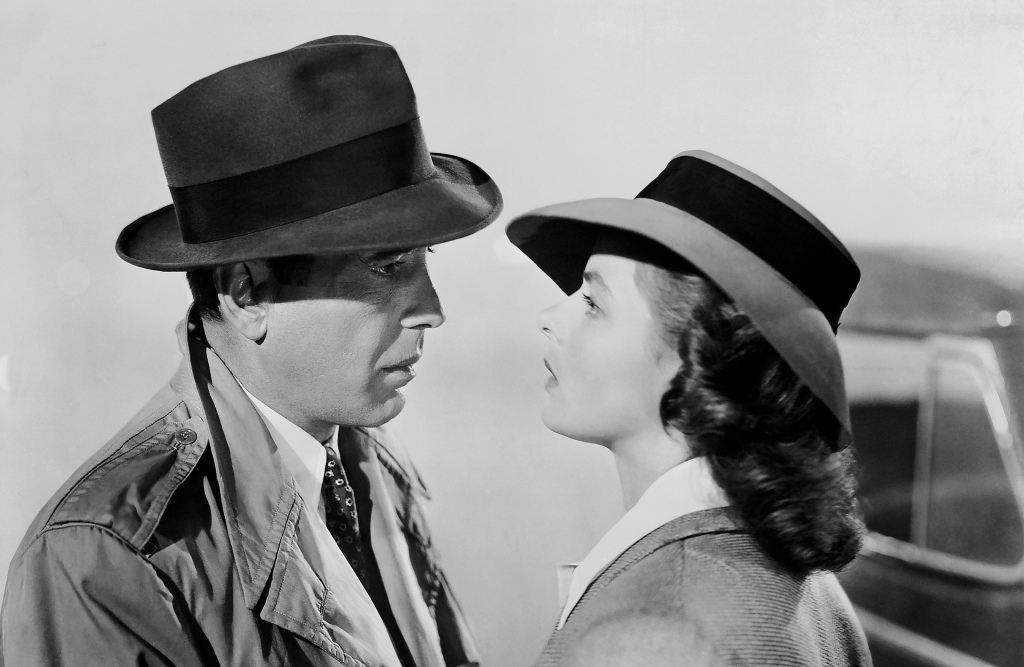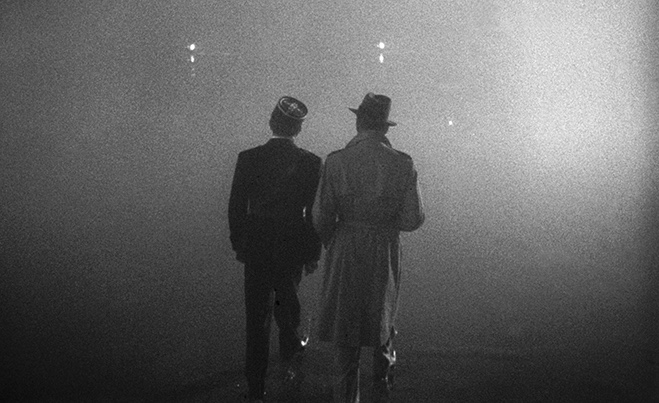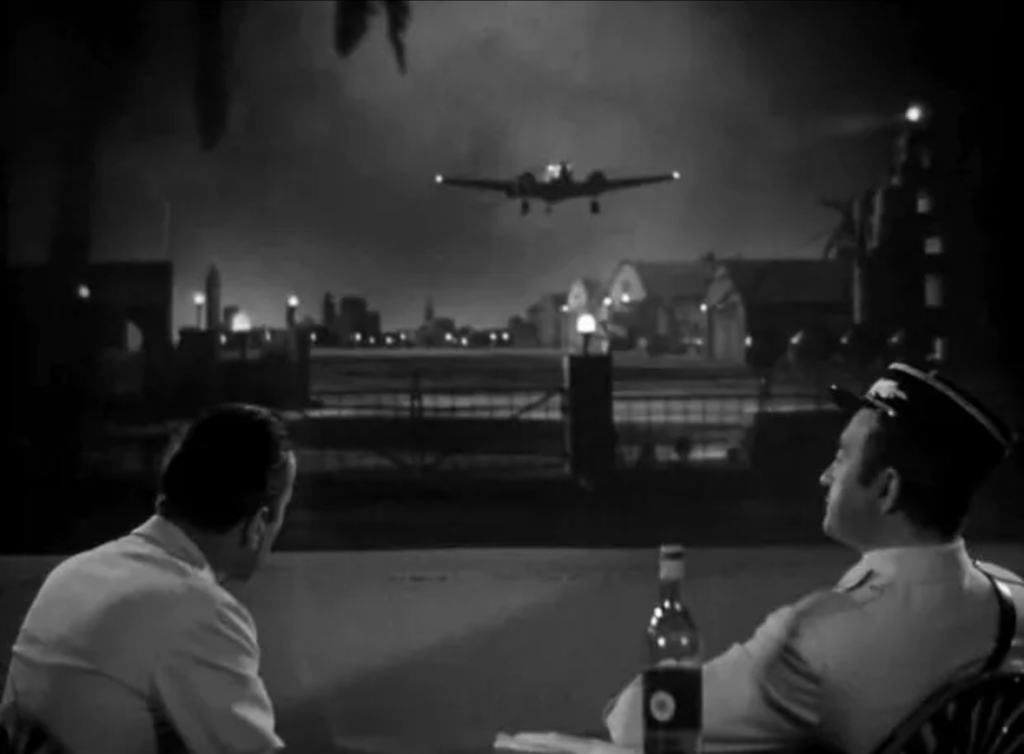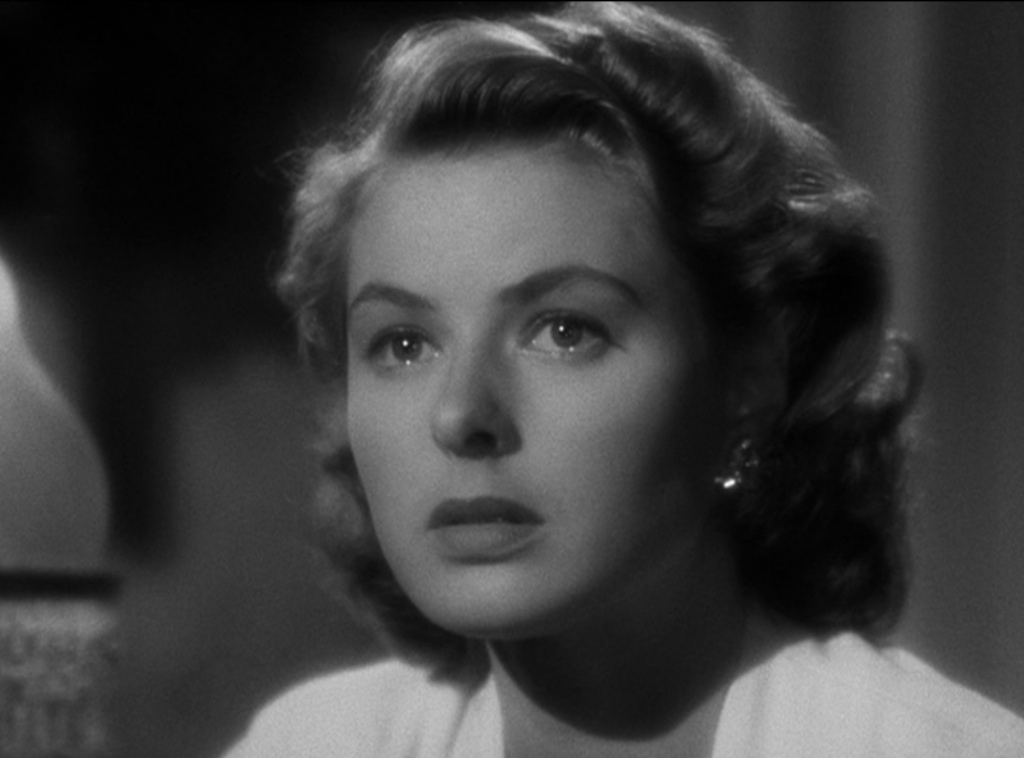Casablanca (Michael Curtiz, 1942) is arguably the most prolific and well-acclaimed film released during the Golden Age era of Hollywood. It is an American romance/drama film starring Humphrey Bogart, Ingrid Bergman, and Paul Henreid. Being a landmark of cinema, Casablanca’s characters, quotes, and evocative theme song have garnered an iconic status over the last 80 years.

Plot
The film was both shot and takes place during World War II, centering around the protagonist, Rick Blaine – a cynical owner of a gambling den in Casablanca, Morocco – a French colony. The club is a cultural hub of refugees attempting to acquire visas to depart for America, who remained neutral in the war at the time. Rick’s cafe also hosts a number of Vichy French and German officials who attempt to persecute these refugees. Rick himself claims to be neutral in all matters, but we soon learn that he was a gunrunner for Ethiopia during the Second Italo-Ethiopian War and also fought for the Republican side in the Spanish Civil War, demonstrating to the viewer that he fights for justice.
A crook called Ugarte has obtained “letters of transit” by killing two German couriers. These letters allow the bearers to travel freely around German-occupied Europe. Being highly sought after among the refugees in Rick’s club, Ugarte plans to sell them and persuades Rick to hold the letters for him. Ugarte is instead arrested by Captain Louis Renault – the corrupt police prefect of Casablanca – and dies in custody, keeping the fact that Rick has the letters secret.
Afterwards, a woman called Ilsa Lund enters Rick’s cafe. After Ilsa asks the club’s pianist, Sam, to play “As Time Goes By”, Rick becomes initially furious at Sam for disobeying his order to never play that song again. However, as Rick spots Ilsa, he is astonished and his anger is relieved immediately. It becomes clear that the couple have a history. Ilsa is married to Victor Laszlo, a Czech Resistance leader who is a fugitive and the couple seek an escape to America. A Nazi leader, Major Heinrich Strasser, enters the club in an attempt to arrest Victor.
After finding out that Rick possesses the letters of transit, Victor attempts to buy the letters off him. Rick refuses his offer and informs him to ask his wife, Ilsa, the reason why. Ilsa then confronts Rick to inquire why he refused her husband the letters, threatening him with a gun. She soon professes that she still loves Rick and explains that she thought that Victor had been killed while trying to escape from a concentration camp. We cut to a flashback sequence, and receive a glimpse of Rick and Ilsa’s time in Paris together. As the couple are about to flee the city together, Ilsa mysteriously abandons Rick without explanation to see her husband, who we learn is in a physically distraught condition after escaping the camp.
After learning this, Rick agrees to help the couple, falsely informing Ilsa that he will stay with her when Victor leaves. Victor enters unexpectedly and learns of Rick’s feelings for Ilsa. After she leaves, Victor tries to persuade him to use the letters of transit to take her to safety. Victor is then arrested by the police, during which Rick convinces Renault to release him by promising to set him up for the crime of possessing the letters. Rick explains to Renault that he and Ilsa are soon departing for America. Renault declines and attempts to arrest Victor, before Rick threatens him with a gun.
Right as the plane to Lisbon is about to leave, Rick tells Ilsa to board the plane with Victor, informing her that she would regret going with him and that “we’ll always have Paris”. Major Strasser attempts to intervene and arrest Victor, before Rick promptly shoots him. After the police arrive, Renault orders them to “round up the usual suspects”, before suggesting to Rick that they join the Free French in Brazzaville. As Victor and Ilsa depart for Lisbon, Rick and Renault walk away into the mist. Rick says, “Louis, I think is the beginning of a beautiful friendship.”

Context
The film was directed by Michael Curtiz, a Hungarian-American director who became the head of Warner Brothers’ Burbank studio. Curtiz’ filmography is vast, spanning over 100 films that were all released under Warner Brothers.
Released in 1942, Casablanca gained immediate critical success, winning three Oscars including Best Director – despite Warner Brothers’ apprehensiveness towards the film, fearing that it would flop. This was due to the fact that it was filmed over the course of three rushed months, with the actors and Curtiz not working well together on set. Casablanca was merely one of a multiplicity films released by Warner Brothers’ in 1942, and was neither the most expensive film nor the film the studio expected to take off.
Despite taking place in the exotic location of Casablanca in Morocco, the entire film was shot at Warner Brothers Studios in Burbank, California – the only exception being the the opening sequence in which Strasser flies past a aeroplane hangar, filmed at Van Nuys Airport, Los Angeles.
As previously mentioned, the film was both shot and takes place during World War II. Interestingly, the film was shot a mere four months before the events of Pearl Harbour, which is why the United States remain a neutral territory in the film. It exists in a liminal period in which America was fully at war, but not yet fully immersed in a propagandistic war ideology.

Techniques
The film’s narrative is predominantly linear, with Curtiz making use of one flashback sequence to illustrate Rick and Ilsa’s romantic affairs in Paris. Curtiz also employs lots of centrally-framed closeups of both Rick and Ilsa, with key lighting and fill lighting also being implemented. Through this, both harsh shadows and well-defined outlines of the characters are created. This, alongside the fact that the film is in black and white accentuates the wistful emotion and atmosphere of the film. Due to the lighting, Ilsa appears to be emanating a sort of radiance which contributes to the mythical nature of her character. Rick’s cafe also feels incredibly lived-in and bustling through the use of blocking, mise-en-scène, and diegetic ambience.
As previously mentioned, the film’s main theme is particularly iconic – the diegetic implementation of the 1931 jazz piece, As Time Goes By. The piece provides a strong romantic evocation, and is played by Sam, the house pianist, in Rick’s club.
I really enjoyed Casablanca for the inarguably timeless romance story it offered, underpinned by the hardships faced by the refugees of World War II . It holds up extremely well for an 80-year-old film, and its prestigious pedestal in cinematic history is well deserved.
Overall, I would rate Casablanca ★★★★.

Really superb! That’s what I was talking about!
LikeLike